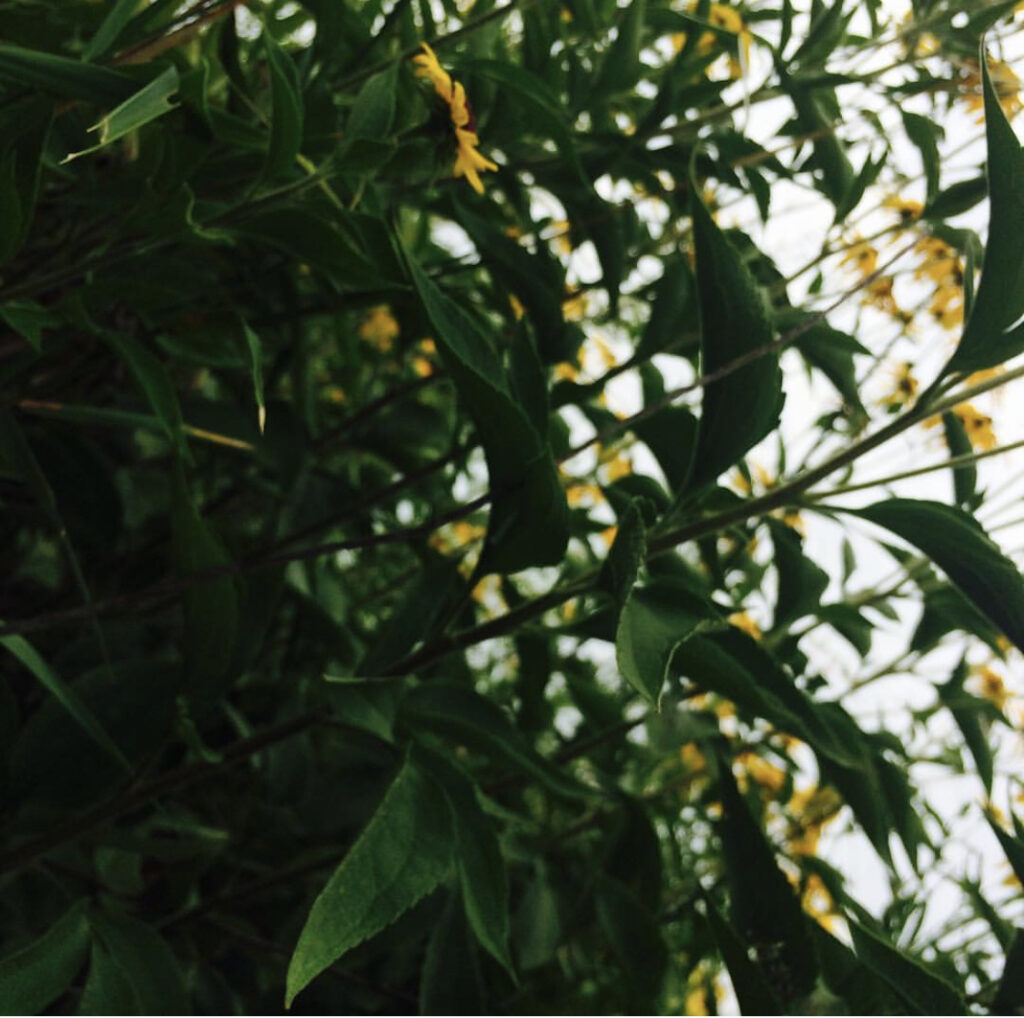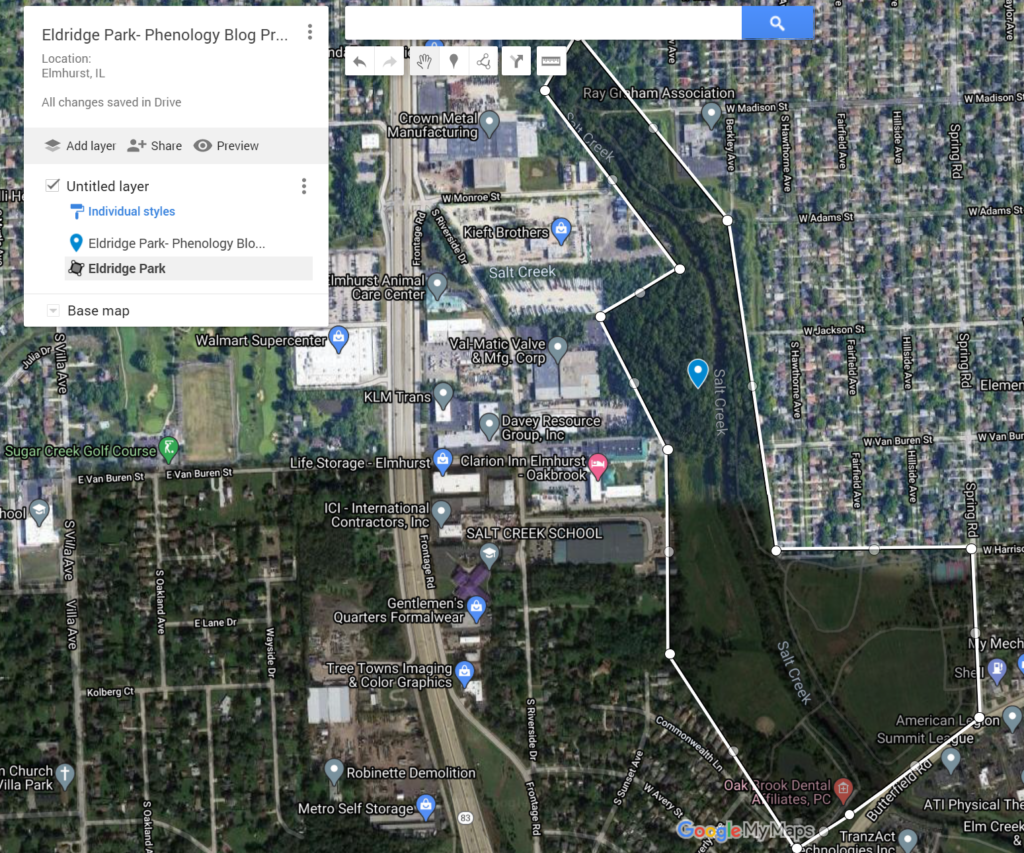
Eldridge Park:
Eldridge is one of the only forested areas in my hometown of Elmhurst, Illinois. Previously, this forested area was a landfill sight, and it wasn’t in 1956 that the city began repurposing the land to create what is now Eldridge Park.
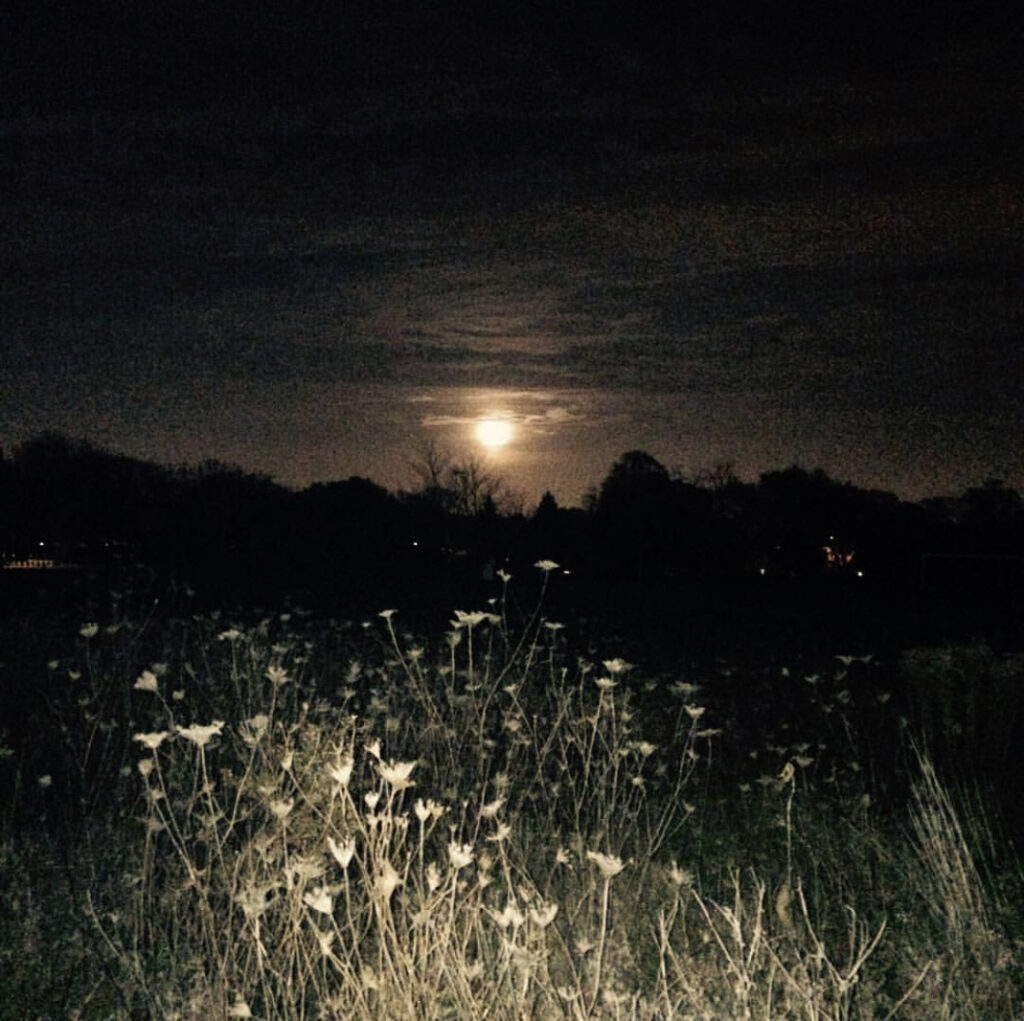
Eldridge Park, while not as forested as Centennial Woods, is a combination of forested areas as well as the the grassland/prairie biome that covers most of Illinois prior to urbanization.
Centennial Woods V. Eldridge Park Ecology and Phenology
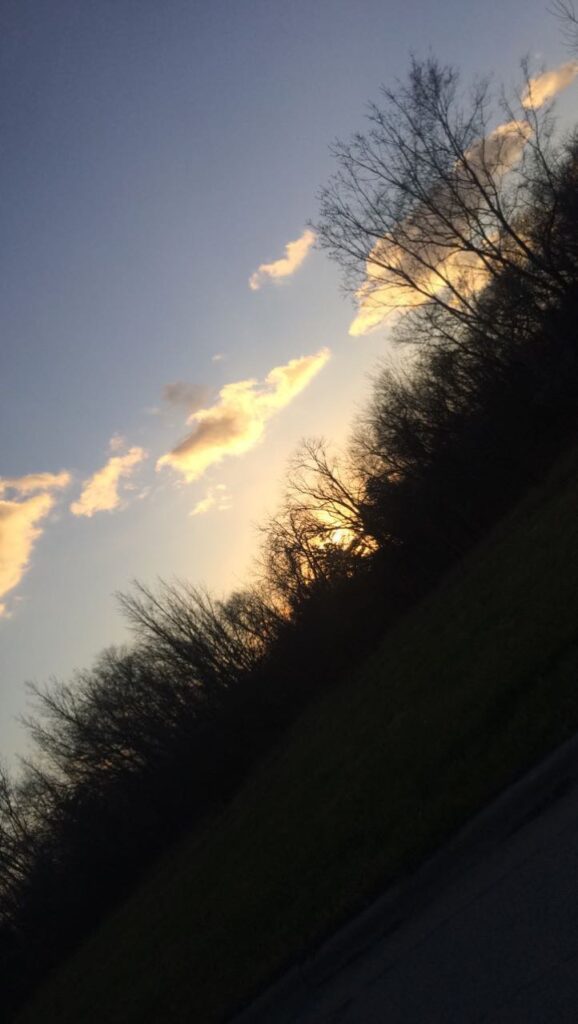
When comparing both Centennial Woods and Eldridge Park on an ecological and phenological level, it essential to acknowledge their geographical differences. Specifically, it is these geographical differences that ultimately cause these natural areas to be made up of different biomes entirely. Eldridge Park is located within the heart of what used to be the Great Plains before it was turned into land for urbanization purposes, while Centennial Woods is a Northern Hardwood Forest. This ultimately causes differences in the ecology of each area.
Specifically looking at the ecology of the area, Eldridge park is both classified as a temperate grassland (prairie) and as a deciduous forest. As a result, we have bird species like the American Gold Finch, generally found in temperate grasslands, and is also home to hawks, owls, coyotes, deer, otters, beavers, skunks, and racons, the last of which are similar to that of Centennial Woods ecology.
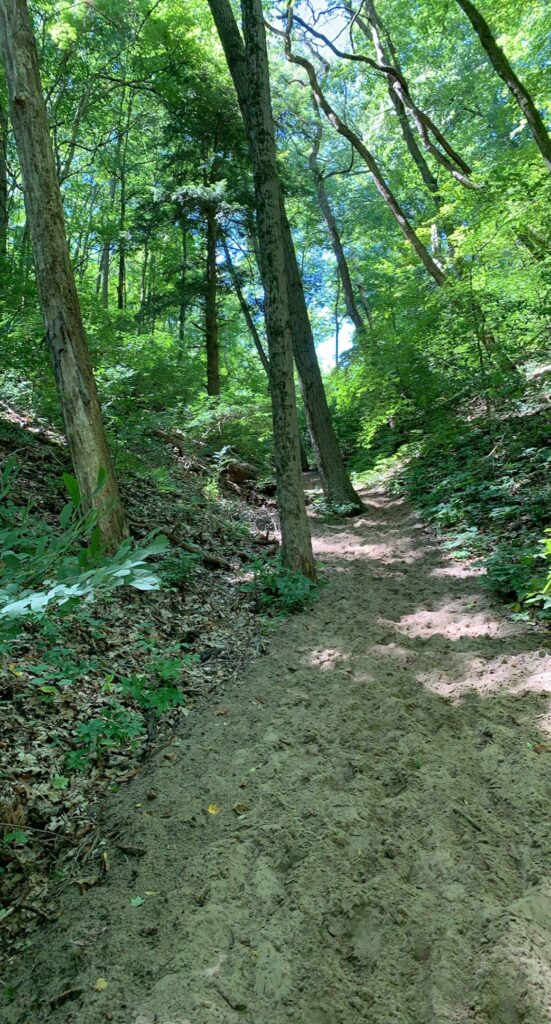
As referenced above, the plant ecology in Centennial Woods is different than that of Eldridge. There is a clear divide between the two locations because this part of the country does not get enough rainfall to support the growth of large trees, but there isn’t little enough rainfall to create a desert; thus, temperate grasslands are created. With this in mind, Centennial Woods has far to moist of a climate to be unable to support tree growth. With these obvious differences aside, differences in soil Ph can have a significant impact on the types of vegetation and woody plants that grow in Each respective location. Centennial Woods has an average Ph of about 4.5, which is extremely acidic, making it perfect for the growth of pine trees. Compare that with the typically neutral Ph found in Eldridge which is why there are not many pines growing in this location.
With all this in mind, the phenology of both locations occurrs in the same way, with palnts going dormant for the winter and animals preparing for the winter or migrating. However, the difference between the phenology in Centennial to that of Eldridge is how soon the phenology starts changing. Because Centennial Woods is not only farther north than Eldridge, but is also at a higher elevation in the mountains, the change in seasons starts much soon than Eldridge Park.
